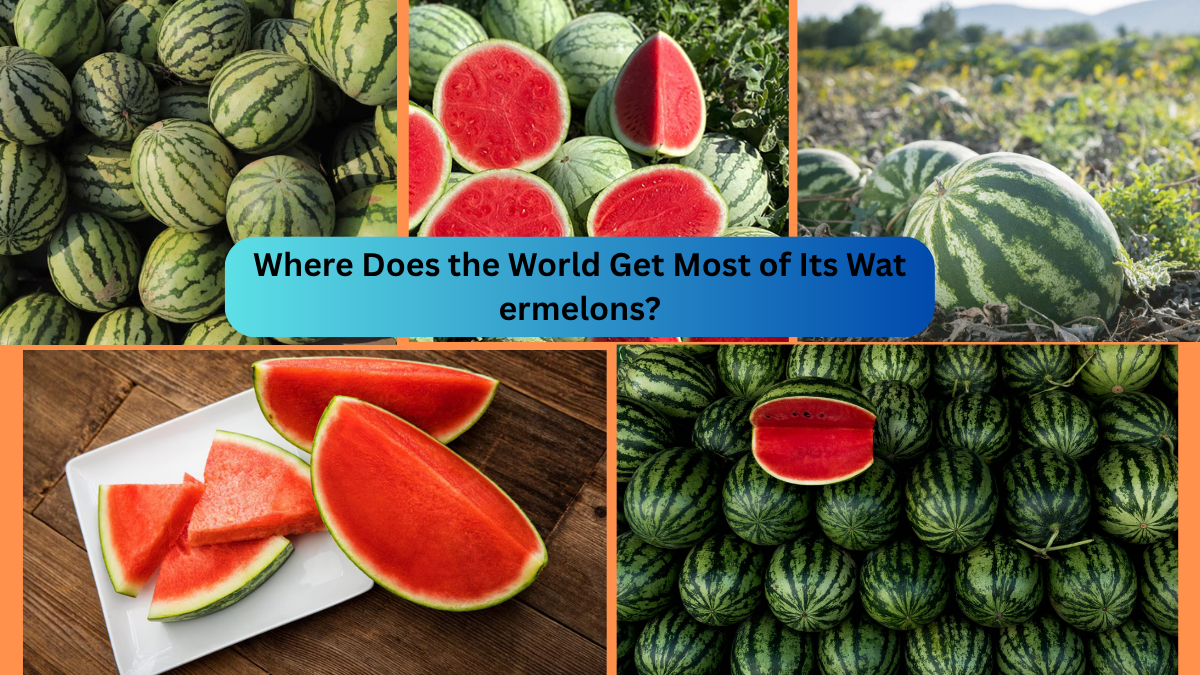There’s nothing quite like biting into a crisp, sweet, and refreshing slice of watermelon on a hot day. With its high water content, natural sugars, and vibrant red flesh, watermelon has become a staple fruit in countless countries around the world. But have you ever stopped to wonder where the world gets most of its watermelons?
Though watermelons are cultivated in over 100 countries, a handful of nations dominate the global market, producing the lion’s share of this beloved fruit. In this article, we’ll explore the major watermelon-producing countries, examine why they lead the industry, and understand how this fruit moves from sprawling fields to your table.
A Brief History of Watermelons
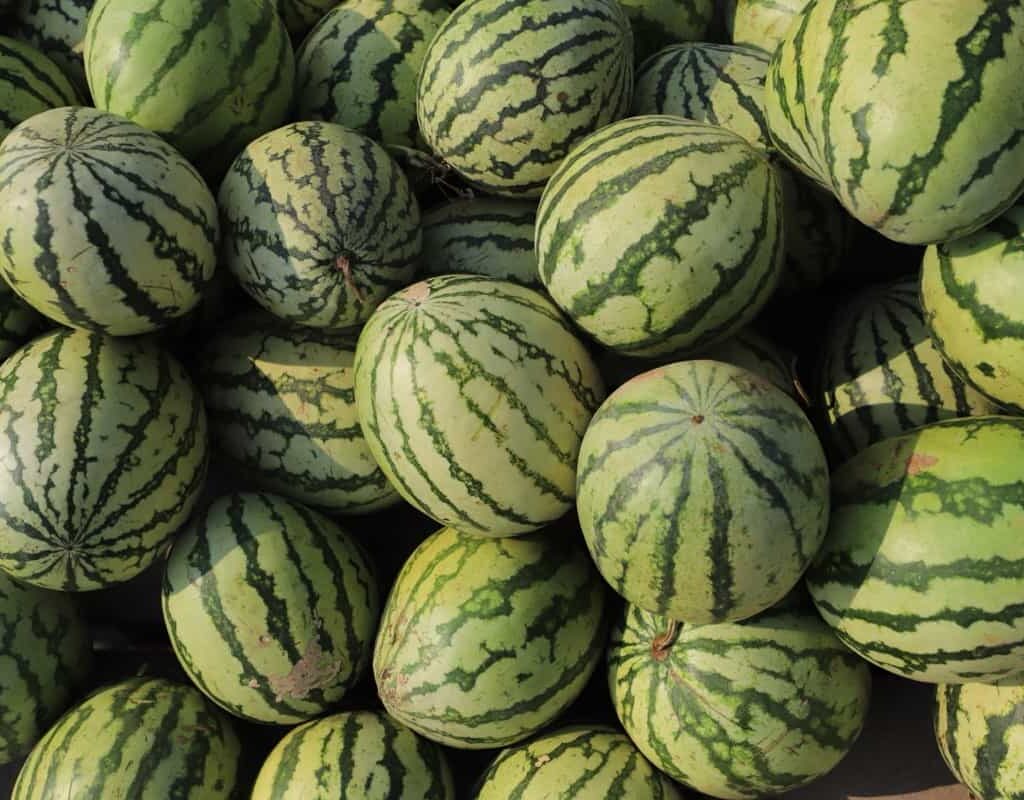
Watermelons (Citrullus lanatus) have a fascinating history that dates back over 5,000 years. Believed to have originated in northeastern Africa, ancient civilizations like Egypt, Rome, and Greece cherished watermelons for their thirst-quenching abilities in hot, dry climates. Wall paintings in ancient Egyptian tombs even depict watermelons being cultivated and enjoyed.
Over centuries, watermelons spread to Mediterranean regions, India, Central Asia, and later to the Americas through trade and migration. Today, watermelon is a globally adored fruit, cultivated in warm regions on nearly every continent.
Global Watermelon Production Overview
The world produces more than 100 million metric tons of watermelons each year, with demand rising steadily due to its popularity as a healthy, hydrating snack and key ingredient in juices, smoothies, salads, and desserts.
Watermelons thrive in warm, sunny, and moderately dry climates with well-drained soil, making them perfect for countries with long growing seasons. While many nations grow watermelons, five countries collectively produce a majority of the world’s supply.
So, Where Does the World Get Most of Its Watermelons?
Let’s take a closer look at the world’s leading watermelon producers:
China — The Global Giant
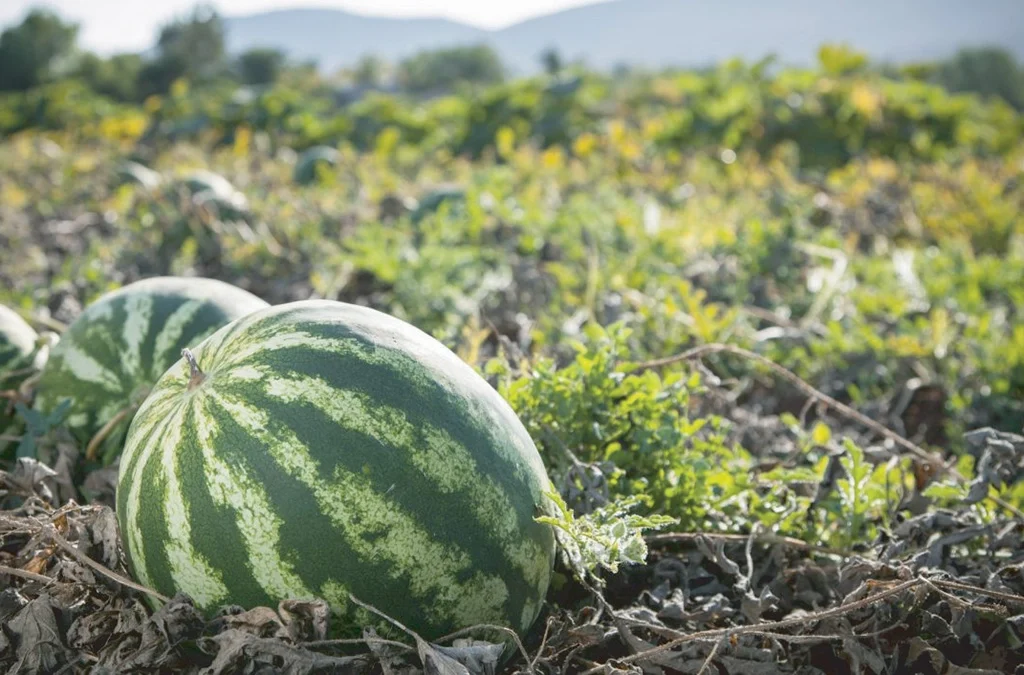
Annual Production: ~60.1 million metric tons
Global Share: Nearly 60%
When it comes to watermelon production, no country comes close to China. It produces over half of the world’s total watermelons, a feat unmatched in the global agricultural industry.
Major Growing Regions:
- Xinjiang: Famous for ultra-sweet, crisp watermelons due to its hot days and cool nights.
- Hebei, Shandong, Hunan, and Guangdong: Provide for China’s major urban markets and regional export.
Why Is China Number One?
- Vast agricultural land dedicated to melon farming.
- Ideal climate conditions in multiple regions.
- Massive domestic demand — watermelon is a traditional summer essential in Chinese households.
- Innovative farming methods, including greenhouse production, seedless varieties, and modern irrigation systems.
Fun Fact:
The largest watermelon festival in the world is held in Poyang County, China every summer.
Turkey — The Melon Hub of Europe and the Middle East
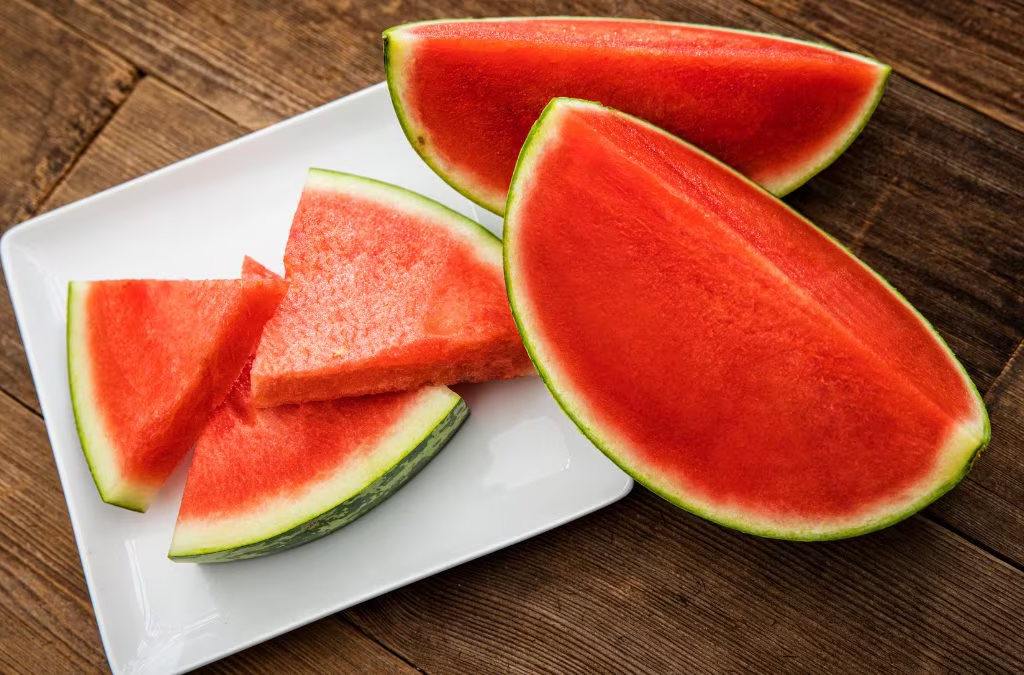
Annual Production: ~3.9 million metric tons
Global Share: 4%
Turkey holds the second position in global watermelon production. Thanks to its Mediterranean climate, fertile lands, and deep-rooted farming traditions, Turkey has become a watermelon powerhouse for both domestic consumption and export.
Major Growing Regions:
- Adana, Mersin, and Antalya are known for large-scale watermelon production.
Why Is Turkey a Leading Producer?
- Long, warm growing seasons with plenty of sunshine.
- Strong local demand, especially during summer festivals and Ramadan.
- Strategic location for exporting to Europe, Russia, and the Middle East.
Fun Fact:
Some watermelons in Diyarbakır, Turkey, can grow up to 50 kilograms (110 lbs)!
India — A Subcontinental Summer Favorite
Annual Production: ~2.6 million metric tons
Global Share: 2.5%
India, with its tropical and sub-tropical climate, is an ideal country for watermelon cultivation. It’s one of the most popular summer fruits across the subcontinent.
Major Growing Regions:
- Karnataka, Tamil Nadu, Maharashtra, Andhra Pradesh, and West Bengal.
Why Is India a Top Producer?
- Warm, tropical conditions perfect for watermelon farming.
- High domestic demand, particularly during the intense Indian summer and festivals.
- Growing interest in export-quality varieties and seedless watermelons.
Fun Fact:
Watermelon in India is commonly served with a sprinkle of black salt and lemon juice to enhance its cooling effect.
Iran — Ancient Farming Meets Modern Innovation
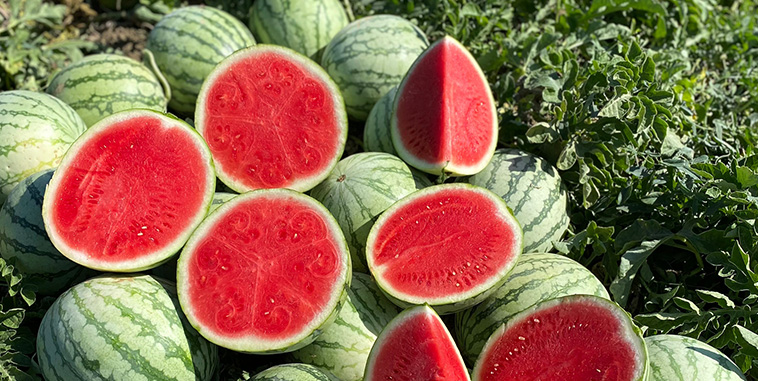
Annual Production: ~2.5 million metric tons
Global Share: 2.4%
Iran has a rich history of melon cultivation, with watermelons being a traditional staple during hot summers and special occasions.
Major Growing Regions:
- Fars, Kerman, Khuzestan, and Yazd provinces.
Why Does Iran Excel?
- Arid and semi-arid climates suitable for watermelon.
- Traditional and modern irrigation methods, including ancient qanat systems and modern drip systems.
- Watermelon is central to Ramadan feasts and Yalda Night celebrations.
Fun Fact:
During Yalda Night (the longest night of the year), Iranians traditionally eat watermelon to ensure good health through the winter.
Algeria — The Desert Surprise
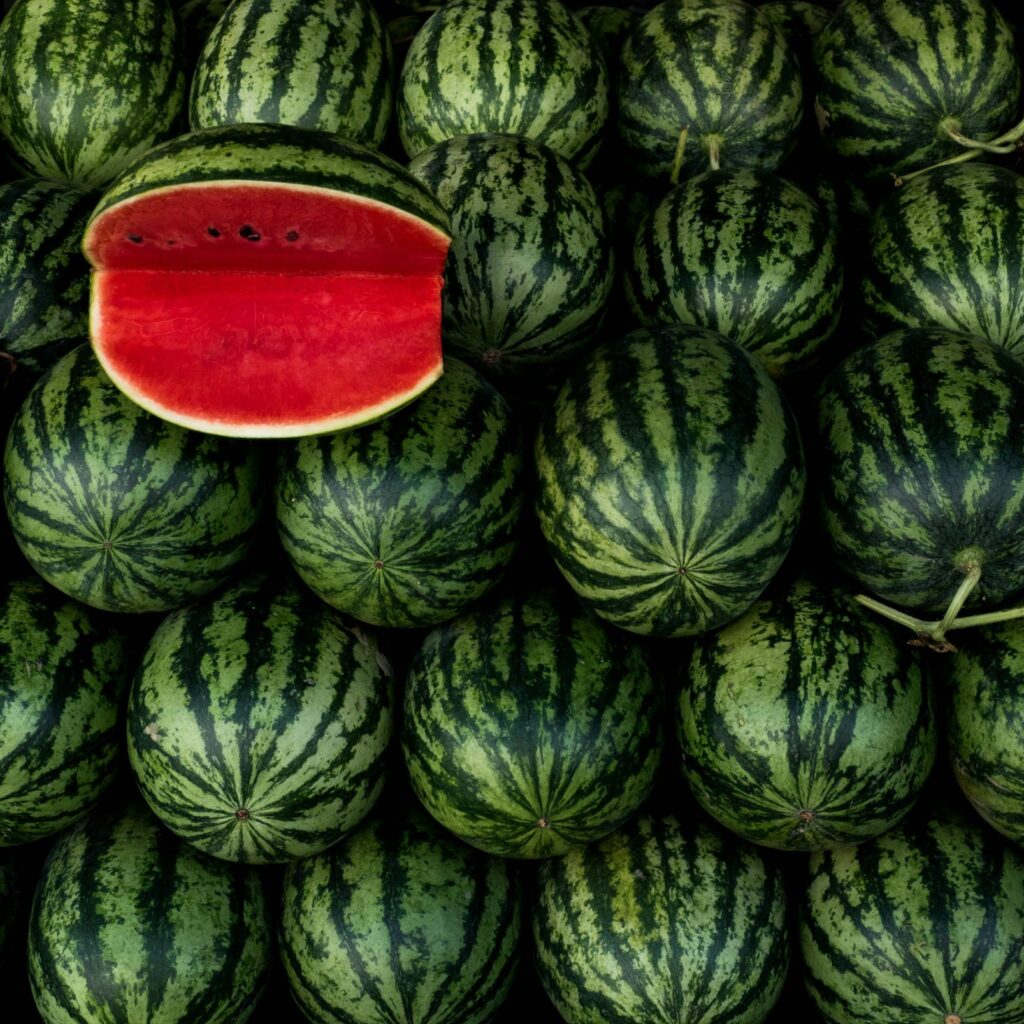
Annual Production: ~2.4 million metric tons
Global Share: 2.3%
Algeria rounds out the top five with its impressive watermelon production, especially remarkable given its arid desert environment.
Major Growing Regions:
- El Oued, Biskra, and Ghardaïa — where watermelons are grown using oasis agriculture.
Why Is Algeria a Leading Producer?
- Innovative farming practices, like underground irrigation channels (foggara).
- High consumption during Ramadan and summer months.
- Increased cultivation of seedless and high-sugar-content varieties.
Fun Fact:
Algerian farmers successfully grow watermelons in the Sahara Desert using underground water sources.
Global Watermelon Trends
Rising Worldwide Demand
- Watermelon consumption is growing due to its health benefits, affordability, and refreshing quality.
- Increasing popularity of seedless, mini, and yellow-fleshed watermelons.
Climate and Water Challenges
- Heatwaves, water scarcity, and shifting growing seasons affect global production.
- Investment in drought-tolerant seed varieties and advanced irrigation is expanding.
Expansion of International Trade
- China, Mexico, and Spain are key watermelon exporters.
- The United States and Europe are among the largest importers.
Conclusion
So — where does the world get most of its watermelons?
The answer is clear: China. This agricultural giant produces nearly 60% of the world’s watermelons, making it the undisputed leader in global supply. Following China are Turkey, India, Iran, and Algeria, each contributing valuable quantities to both local and international markets.
Whether you’re savoring a fresh watermelon slice in Beijing, enjoying a chilled melon juice in Mumbai, or having a summer picnic in Ankara, chances are those watermelons originated from one of these global watermelon powerhouses.
As climate conditions evolve and market trends shift towards seedless and specialty varieties, these leading countries continue to innovate, ensuring that this refreshing fruit remains a staple of summer tables around the world.
